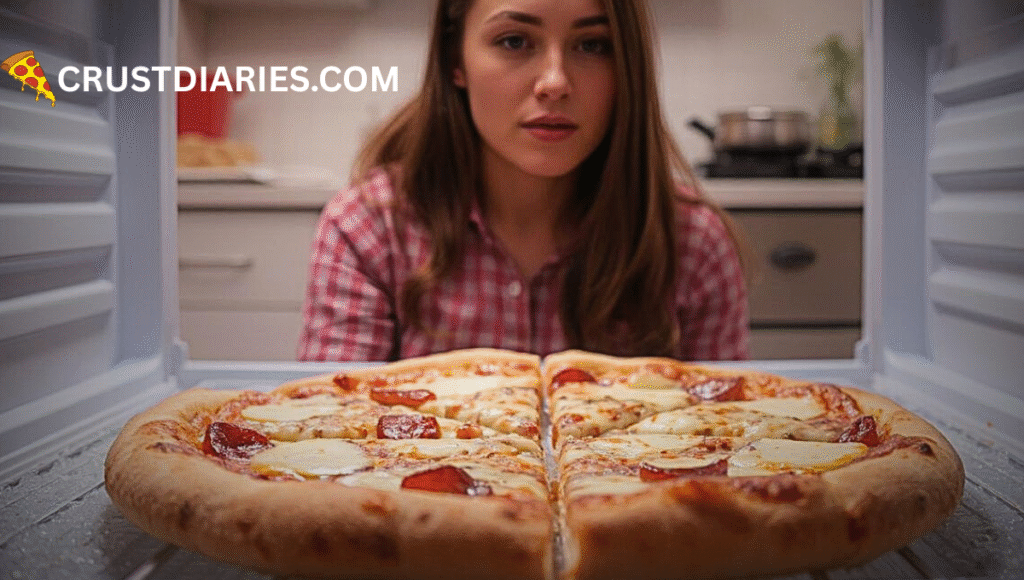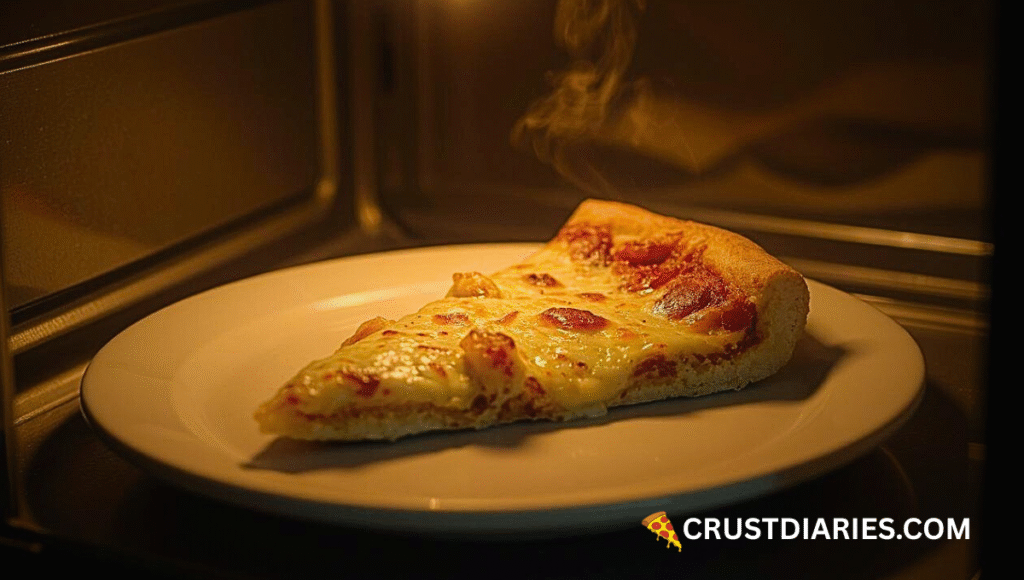Pizza is one of the most world’s favorite comfort foods, good for movie nights, gaming sessions, or casual dinners. But leftover pizza can quickly become a health disease if not stored properly. In this article, we’ll cover common pizza storage mistakes and give tips to keep your slices safe and delicious.
1-Leaving Pizza Out Too Long at Room Temperature

The Danger Zone:
- One of the biggest mistakes is leaving pizza out on the counter. According to the USDA, perishable food should not sit at room temperature for more than 2 hours or just 1 hour if the room is hotter than 90°F (32°C).
Why it’s risky:
- Bacteria such as Salmonella and Listeria thrive in this temperature range, making your pizza unsafe to eat.
What to do instead:
- Refrigerate leftover pizza within 2 hours.
- Keep your fridge below 40°F (4°C); a food-safe thermometer can help.
2-Storing Pizza in the Cardboard Box

Why cardboard is a problem:
- Cardboard absorbs moisture, which promotes bacterial growth.
- Some boxes contain dyes and chemicals not meant for long-term food storage.
Better options:
- Use an airtight container.
- Wrap slices tightly in plastic wrap or aluminum foil.
3-Freezing Pizza Improperly

Common mistakes:
- Leaving pizza in the box.
- Not sealing it properly.
- Freezing pizza after it’s been in the fridge for more than 3 days.
Safe freezing tips:
- Wrap each slice in plastic wrap or aluminum foil.
- Place wrapped slices in a zip-lock freezer bag.
- Label with the date and consume within 1–2 months for best quality.
4-Reheating Only the Surface

Looks hot? Still cold inside:
- Microwaves or ovens can heat pizza unevenly, leaving some areas cold—where bacteria can survive.
Safe reheating:
- Use a toaster oven or conventional oven for even heating.
- Make sure the pizza reaches an internal temperature of 165°F (74°C) using a food thermometer.
5-Trusting Your Eyes or Nose Alone

Pizza might look and smell fine but can still be unsafe
- Shelf life:
- Fridge: 3–4 days
- Freezer: Up to 2 months
Tip: Don’t rely on the “sniff test.” Harmful bacteria may not change the smell or appearance of your pizza.
6-Handling Leftovers with Dirty Hands

Cross-Contamination Alert
Not taking care of cleanliness eating pizza with dirty hands or using dirty utensils can also increase the growth of bacteria.
Quick tips:
- Always wash your hands before eating
- Always use clean utensils
- Avoid touching pizza slices directly
7-Thawing Pizza at Room Temperature

Thawing pizza on the counter can leave it in the “danger zone” for hours.
Safe thawing methods:
- Thaw in the fridge overnight.
- Use the defrost setting if it needs to be heated immediately.
Final Thoughts:
Pizza is a favorite comfort food and is very tasty.but if not stored properly it can become a health hazard. usually we leave pizza at room temperature for a long time and forget about it. storing it incorrectly in the refrigerator can cause bacteria and germs like salmonella to grow inside the pizza.
To stay safe:
- Refrigerate leftovers pizza within 2 hours
- Store pizza slices in airtight containers or wrap tightly in foil or plastic
- Do not store pizza in the refrigertor for more than 3 to 4 days
- Reheat pizza to at least 165°F (74°C) before eating





Pingback: 🍕How long can pizza last in the fridge?🧊 - crustdiaries pi
Pingback: Best Pizza in the USA and Canada 2025 | Top 20 Pizza Places?
Pingback: Pizza with a Twist: 6 Creative & Delicious Pizza Ideas You Must Try
Pingback: Does Cold Pizza Taste Better? The Science Behind Leftover Pizza
Pingback: Pizza King Menu – Prices, Deals & Specials Worldwide